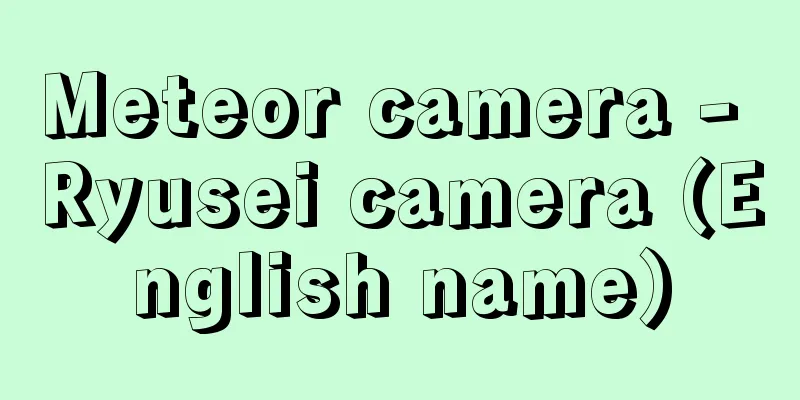Meteor camera - Ryusei camera (English name)

|
Starting in the 1930s, Harvard Observatory and other institutions began to make specialized attempts to photograph meteors, and specialized cameras were developed. These consisted of a rotating fan-shaped disc placed in front of the objective of the wide-field Super Schmidt Telescope, which interrupted the trail of a meteor every 1/60th of a second, capturing the image as a broken line. Source: Encyclopaedia Britannica Concise Encyclopedia About Encyclopaedia Britannica Concise Encyclopedia Information |
|
1930年代よりハーバード天文台そのほかで,流星を専門に撮影する試みが始り,専門の写真機がつくられるようになった。これは広い視野をもつスーパー・シュミット望遠鏡の対物鏡の前に回転する扇形板を置き,流星の軌跡が 60分の1秒ごとにさえぎられて破線状に写るようになっている。
出典 ブリタニカ国際大百科事典 小項目事典ブリタニカ国際大百科事典 小項目事典について 情報 |
<<: Meteor shower - Ryuseigun (English spelling) Meteoric stream
Recommend
Shigaraki Palace
One of the palaces of Emperor Shomu. It is also w...
Kyodo News - Kyodo News
Japan's leading news agency. It was founded o...
Kwŏn Kǔn (English spelling)
1352‐1409 A Confucian scholar and official in the ...
Wu-zhu-qian; Wu-shu-ch`ien
An ancient Chinese bronze coin with the inscriptio...
Untouchables
A general term for the discriminated groups (outc...
Karukayado - Karukayado
This is a hall in Saikoji Temple, Ishido-cho, Kita...
Pentastomida
…They live parasitically inside the bodies of rep...
Fraxinus
...A deciduous tree of the Oleaceae family. In th...
Calimala (English spelling) Arte di Calimala
One of the guilds in medieval Florence. Its actual...
Siege of Vienna - Vienna siege
Ottoman troops marched against Vienna in the 16th ...
matrix cell
...Figure 1 shows the morphology of the human bra...
Great Blacksmith - Ookaji
…They are also called swordsmiths or sword crafts...
Napoleon [I] - Napoleon
Emperor of France. Born into the Bonaparte family,...
Belonite (English spelling)
This is one of the morphological classifications o...
Barrel - Barreru (English spelling) barrel
A customary unit of volume in the imperial system...









